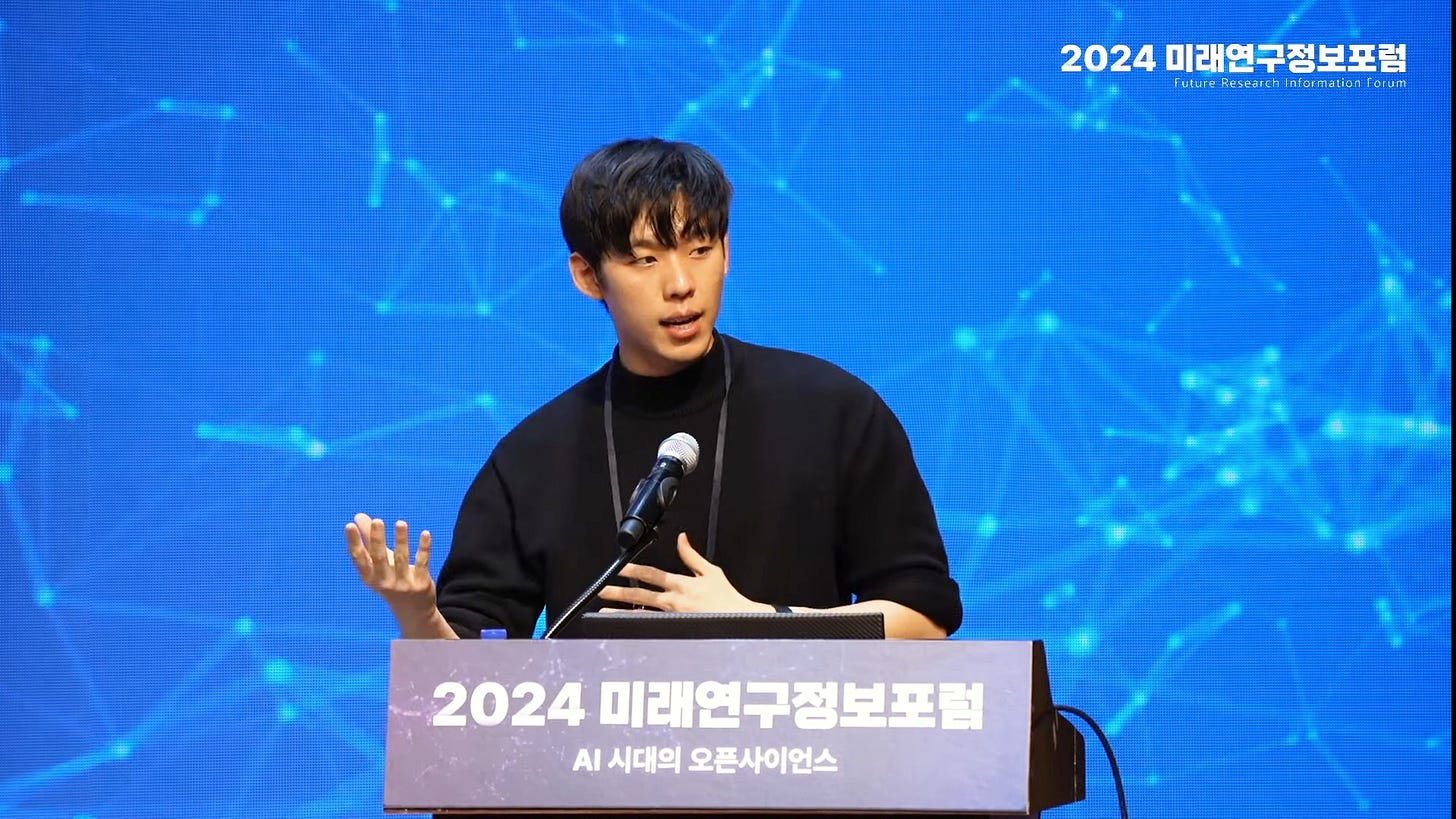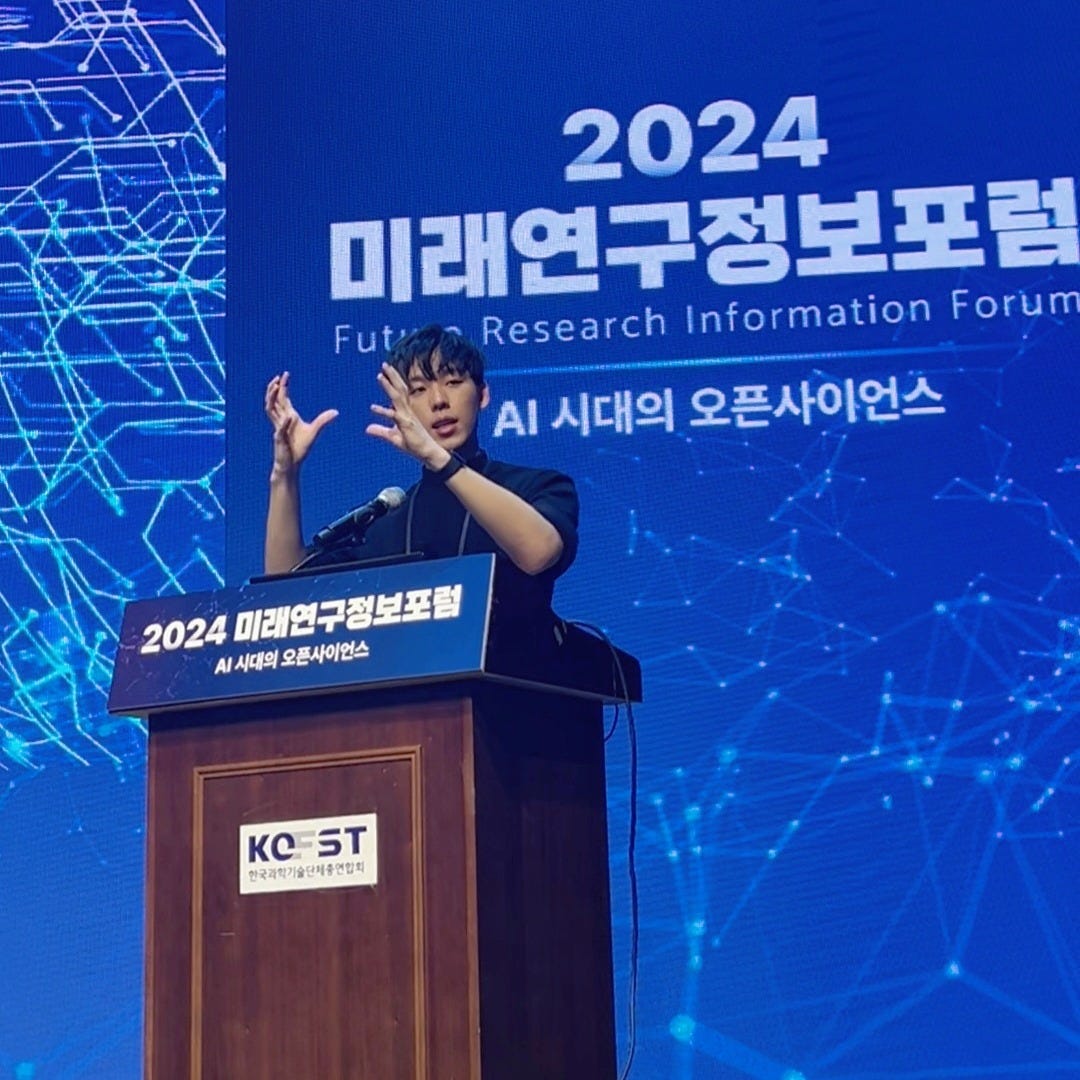Interview: Haon Park - a Researcher at Anthropic Leading the Charge for Trustworthy Generative AI
How the Co-founder of AIM Intelligence and Researcher at Anthropic is Ensuring AI Security and Unlocking Safe Innovation
Exploring Safe AI with Haon Park, Co-founder and CTO of AIM Intelligence
In a rapidly evolving AI landscape, the safety and security of generative models have become critical focal points. Few are better positioned to address these challenges than Haon Park, a dynamic leader in AI security. Currently an AI Model Safety Researcher at Anthropic, Haon has built an impressive portfolio that includes co-founding AIM Intelligence and developing cutting-edge frameworks like Auto-Aim, a self-improving adaptive AI attack tool.
From his work on AR glasses leveraging Neural Radiance Fields to pioneering ethical frameworks for AI, Haon has consistently pushed the boundaries of innovation while maintaining a focus on trustworthiness and safety. This interview dives into his experiences, the vulnerabilities of generative AI, and his vision for a secure and creative future in this transformative field.
You’ve worked extensively on AI safety and security, particularly with tools like Auto-Aim. What are the most pressing vulnerabilities in generative AI today, and how can the community address them effectively?
Generative AI introduces a wide range of vulnerabilities and safety risks that are becoming increasingly evident. We've already seen alarming incidents, such as reports of ChatGPT being misused for criminal planning, deepfake videos being used for blackmail in Korea, and a tragic case of a teenager taking their own life after interacting with Character AI. Companies are also facing legal consequences for harmful outputs from their chatbots. Unfortunately, I believe these cases are just the beginning. As generative AI continues to expand into more critical and high-risk domains, the frequency and severity of such incidents will likely increase.
At AIM Intelligence, we actively test for common risks like misinformation, hallucinations, and copyright violations. However, we also focus on more severe threats, including the generation of violent content, illegal activities, and sexually explicit material. With the growing power of foundation models, the ability to produce dangerous outputs like illegal homemade biological toxin recipes has become a critical concern.
One major challenge we've identified is that establishing a universal safety and security standard for all foundation models is neither practical nor effective. Risks vary significantly across industries and use cases, so we've adopted a domain-specific approach. This allows us to tailor safety measures to the unique guidelines, regulations, and risks of each sector.
The broader AI community must prioritize understanding these risks and avoid deploying generative AI without proper safeguards. It's crucial to implement strong guardrails and avoid placing too much trust or authority in AI-generated responses. Only through responsible development and deployment can we mitigate these evolving threats.
With your experience developing adaptive AI attack frameworks, how do you balance testing system robustness and preventing potential misuse of such techniques?
At AIM Intelligence, we prioritize both comprehensive security testing and the responsible management of potential misuse. Our extensive database of AI attack queries—sourced from research papers, the Reddit Jailbreak subreddit, BASI (one of the largest AI red-team hacker communities), and our global jailbreak hackathons—powers our adaptive penetration testing system, AIM RED. This system conducts in-depth assessments tailored to our client's domains, ensuring alignment with specific legal and regulatory frameworks.
To mitigate risks, AIM RED operates in tandem with AIM GUARD, a real-time guardrail system designed to detect and block adversarial inputs and outputs. Vulnerabilities identified by AIM RED are continuously used to update AIM GUARD, reinforcing defences against emerging threats. This cyclical process ensures continuous improvement and adaptation.
As highlighted in Anthropic's recent paper, "RAPID RESPONSE: MITIGATING LLM JAILBREAKS WITH A FEW EXAMPLES" the strongest defence is one that scales effectively against evolving attack methods. We believe our integrated approach with AIM RED and AIM GUARD embodies this principle—delivering adaptive, scalable protection without compromising security or compliance.
Generative AI has immense creative potential but also raises ethical concerns. How do you envision the role of trustworthiness and safety frameworks in shaping the future of this technology?
Generative AI presents a complex challenge: enabling creativity and utility while ensuring safety and ethical use. Striking this balance is critical. Broad, one-size-fits-all safety frameworks often fail to account for the diverse contexts in which AI models are deployed. Therefore, we focus on giving developers flexible tools to align their models with their specific goals and user needs.
For instance, AI applications in casual or creative platforms may tolerate more open dialogue, including mild profanity, while services designed for vulnerable populations—like children or the elderly—require stricter safeguards. Critical sectors such as finance, healthcare, government, and defence demand rigorous alignment with industry regulations and legal standards.
Our vision is a future where AI companies are free to innovate and enhance their models without being constrained by rigid safety measures. Companies like AIM Intelligence will provide adaptive, context-aware trust and safety frameworks, empowering developers to build secure, responsible, and high-performing AI systems.
As someone involved in both research and practical applications of AI, what trends or breakthroughs in large language models excite you the most right now?
One of the most exciting developments in AI today is the integration of LLMs into robotics, VLMs for autonomous vehicles, and agentic systems that can independently interact with digital environments. These advancements represent a significant leap toward realizing the futuristic potential of AI, where machines can understand and operate in complex, real-world scenarios.
However, these innovations also introduce a whole new array of safety and security risks. As these systems gain greater autonomy and control, the potential for physical harm and human casualties increases—particularly in domains like autonomous driving and robotics. The complexity of these systems demands a deeper understanding of how vulnerabilities can manifest, not only through traditional text-based attacks but also through image-based and multimodal attacks. These attack vectors are fundamentally different and require more sophisticated, creative defence mechanisms.
At AIM Intelligence, we are actively researching how to address these challenges in cutting-edge AI applications. Our focus is on developing adaptive security solutions that anticipate and mitigate risks across different modalities, ensuring that these technologies can be deployed safely and responsibly. By staying ahead of emerging threats, we aim to support the safe evolution of AI as it moves beyond digital spaces and into real-world environments.
You’ve had a diverse career trajectory—from working on AR glasses using Neural Radiance Fields to strategic media roles. How have these experiences influenced your approach to building creative and safe AI systems?
My diverse career background has been instrumental in shaping a holistic and innovative approach to AI safety. At AIM Intelligence, we tackle AI vulnerabilities from multiple angles, and my varied experiences allow me to approach these challenges with a broader perspective.
Working with robots and robotic systems provided me with deep insight into the complexities of securing agentic and autonomous systems. This experience directly informs how I approach red teaming for robotics, where physical-world interactions introduce unique security challenges.
My work with visual technologies, particularly in AR glasses using Neural Radiance Fields, has been invaluable for understanding and securing Vision-Language Models (VLMs) and multimodal AI systems. These models process and interpret visual data in ways that can be exploited through image-based or multimodal attacks, requiring creative and adaptive defence strategies.
Additionally, my experience in strategic media has given me critical insight into the dynamics of misinformation, hallucinations, political bias, and online hate speech. This perspective has been crucial in developing tools that assess and mitigate risks in user interactions, especially when handling sensitive or potentially harmful content.
By drawing on these diverse experiences, I’m able to design security frameworks that are not only technically sound but also adaptable to the complex, real-world environments where AI operates.
The Future of Generative AI: Haon Park’s Vision
Haon Park’s insights shed light on the intricate balance between innovation and responsibility in generative AI. His commitment to making AI systems safer and his diverse career trajectory underscores the importance of interdisciplinary approaches in addressing today’s AI challenges.
As we move further into an AI-driven era, leaders like Haon remind us of the power of ethical innovation in shaping technology that benefits humanity. Thank you, Haon, for sharing your journey and expertise with Building Creative Machines!





